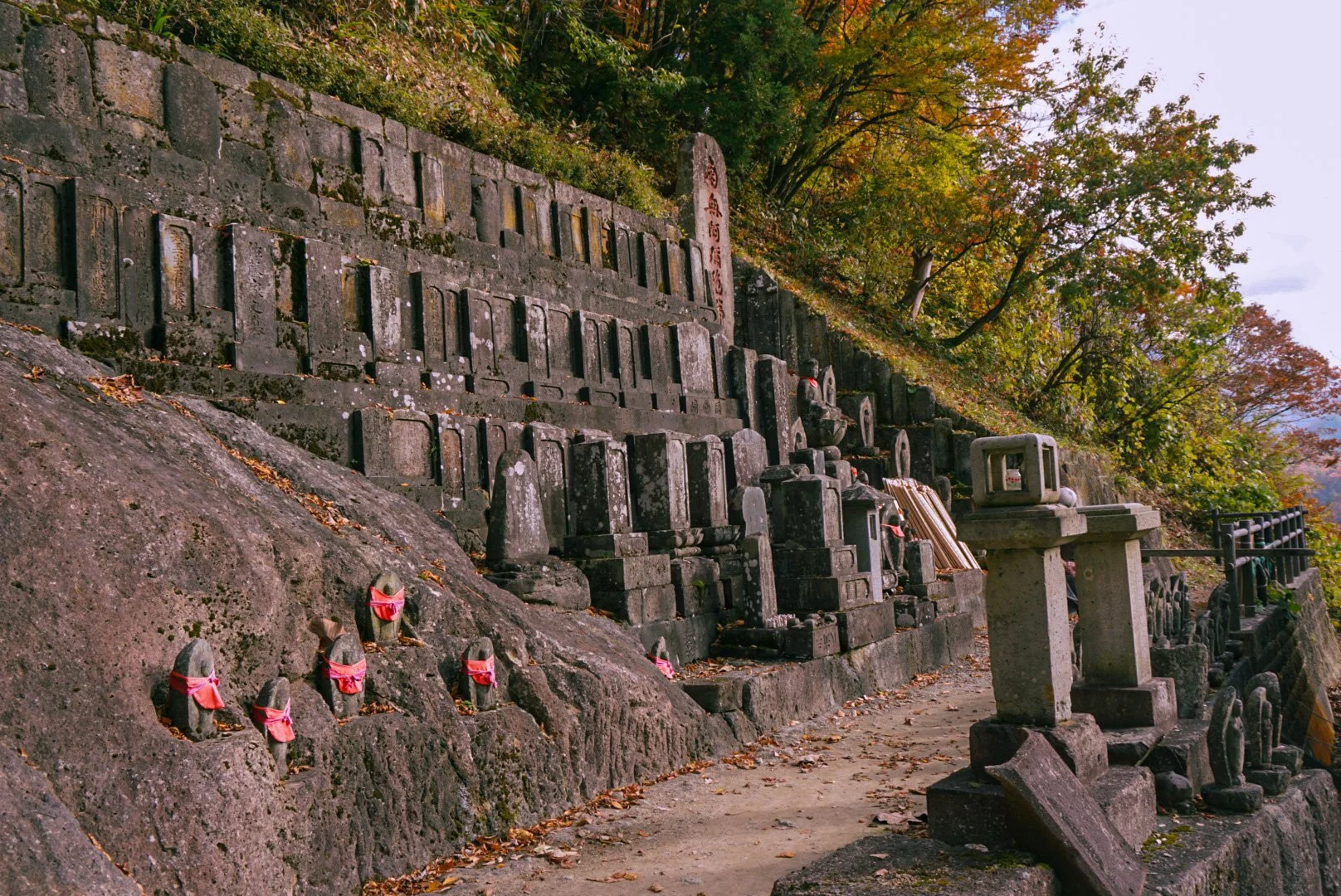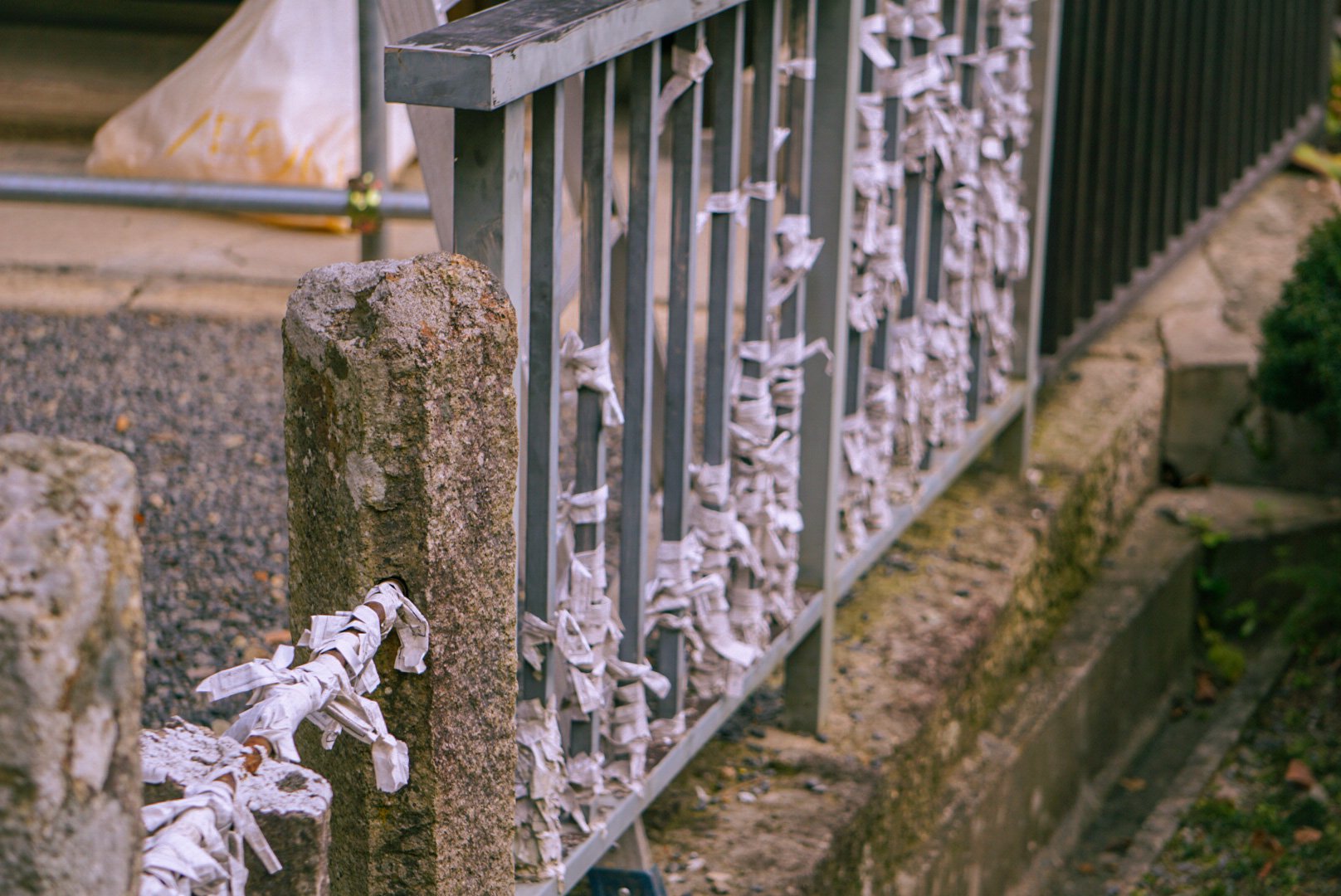Yamadera
Yamadera had been on my radar for a long time because it’s one of the most iconic places in Tohoku. This is a place that’s usually on travel brochures or posters that advertise Tohoku travel. I was so excited when I finally had a plan to visit! Yamadera is rich in Japanese history and I learned a lot that I’d like to share here, as well as some pretty unbelievable views.
This is a small hike consisting of 1,000 stone steps. I’ve mentioned before in my post about Mount Haguro that stairs are the bane of my existence, but Yamadera felt different. There were so many things that were worth stopping for, so I never really felt tired or out of breath.
The official name for Yamadera is Risshakuji Temple, which is towards the end of the climb and offers a fantastic view of Yamagata City’s south valley. It’s commonly called “Yamadera” because the direct translation of this is “mountain temple.” I chose to go in fall because I knew the mountain views would be crazy beautiful this time of year.
Brief History
Yamadera has been around for a very long time, and it’s history is quite interesting. It’s believed that this temple was founded by a priest named Jikaku Daishi, also known as Ennin. Daishi was part of the Tendai sect of Buddhism as well as a branch of Enryakuji, which is a temple near Kyoto. He studied Buddhism in China and shared what he learned when he returned to Japan. After some time, Daishi set out to create a new Tendai sect branch, and thus, Yamadera was founded. He was the first person who introduced Tendai-sect Buddhism to Japan, and Yamadera became the very first Tendai temple in Northern Japan. It is said that Daishi brought a flame with him from Kyoto, and it continues to burn today. It’s known as the “Eternal Light of Buddhism,” and it’s been burning for well over 1,000 years inside Yamadera!
Matsuo Basho
Another well-known historical figure that visited Yamadera was master poet Matsuo Basho. Basho was a traveler at heart and composed haikus based off of his journeys. In the 1600s, he began his journey to Northern Japan. During this expedition, he created his most famous haiku collection called “The Road to the Deep North.” He eventually came across Yamadera and created a short poem about the peacefulness and stillness of the area. Next to the stairs near the entrance lies a memorial, where several of his poems have been buried.
Yamadera Today
Today, visitors can climb the steps up to Risshakuji Temple and learn about the history surrounding it. Tours are offered in both Japanese and English. The mountain itself is also a sacred place for those who practice Asceticism, which is extreme self-discipline and abstaining from all forms of indulgence. There are about 30 temples and shrines throughout the climb. However, most of them are not the original structures. Yamadera was destroyed in wars in the 16th century and was rebuilt soon after.
Getting Started
Upon entering Yamadera and starting the climb, there was already a lot of things to see. Gravesites adorned with Buddhist images were some of the first things I noticed. Before Yamadera was founded, the mountain itself was considered a holy site. People would come to this mountain to bury loved ones, so there are many gravesites around Yamadera. There are also a lot of smaller statues that visitors can give offerings to. Throughout the hike, I saw money offerings and unopened drinks.
Offerings are common at shrines and temples around Japan. I always see money offerings at alters, so it was a first for me to see drinks and even food being left instead. I thought it was really interesting and it made me curious about how offerings work and why people leave certain items.
Money offerings.
One of the many gravesites I saw during the climb.
Drink and money offerings.
Rock Formations
All along the path are incredible and dramatic rock formations which really caught my attention. Before all the buildings were added, this place was mainly just caves that were carved into the volcanic rocks of the mountain. These caves were used for praying and ascetic practices. Apparently, there are some Buddhist figures that are carved into the rock faces, but I didn’t really catch any. I’d love to return one day, as I found out about some secrets that I missed out on.
As I was climbing, I noticed there were coins lodged into the crevices and holes of the rock walls and formations. I’ve heard people do this after praying, but it could also be an offering. The sunshine was glinting off of the coins, so most of the walls along the path were shimmering.
The rock walls throughout Yamadera looked like this.
If you look closely, you can see some shrines clinging to the cliffside.
Niomon Gate & The Upper Half
Niomon Gate marks the entrance to the upper half of Yamadera. The Nio guardians are housed here, and they’re responsible for keeping evil out of the temple. It’s said that people with an evil heart won’t be able to enter through the gate.
After going through, there was only a little ways left to go. At the very end of the climb is Nyohodo Temple, which houses the statue of Buddha. This was the statue that Daishi seemingly carried with him while he was studying in China. To the left of Nyohodo is Daibutsuden Hall which houses the Buddha of Immeasurable Life and Light. People from all walks of life can come here to pray and appreciate the temple. Memorial services for departed souls are also carried out here daily. It was rather busy when I finally got to this point. I saw a lot of people praying and taking part in religious services, so I didn’t get terribly close.
I also saw a lot of omikuji in the upper half of Yamadera. These are Japanese fortune telling slips. Visitors can purchase omikuji at many shrines and temples across Japan, but it’s particularly popular here. The fortune is given to you at random after you buy it. Usually, the fortunes are separated into three categories: love, health, and work. If you get a fortune you don’t like, don’t worry! You can tie it up at a designated spot at the shrine, which will change it into good fortune. Bad fortunes are meant to be tied up and left behind.
Niomon Gate
Omikuji I saw on the way up to the last destination of the climb.
Omikuji in front of Nyohodo Temple.
Nyohodo Temple and Daibutsuden Hall.
People praying at Daibutsuden Hall.
The Iconic Spot
I was getting more and more anxious as I was climbing because I knew the best part was coming soon. When I finally rounded the corner and saw this iconic view, I may or may not have done a little happy dance. I was so delighted to finally see this with my own eyes. It was more beautiful than I imagined, especially with all the fall colors. It always feels good to cross off a bucket list item!
This is probably the most photographed location in Yamadera. In the photo, Kaisando Hall is on the right. This building is dedicated to the temple’s founder, Jikaku Daishi. Inside of this structure is a statue of Daishi. Incense and food offerings are put inside every day. The small red structure perched on the cliff is Nokyodo, which is the oldest structure in Yamadera. It’s also used to store Buddhist scriptures. Below Nokyodo, just under the cliff, lies the remains of Jikaku Daishi.
The path continues up towards the right, which leads to the Goidaido observation deck. There is a breathtaking view of the valley below and the town within it here. The mountains are astonishing, it’s easy to see how Basho wrote some of his best work here. I’m not a poet, so words escape me when I try to describe the beauty of it. I am, however, a photographer. So I’ll let my photos do the talking.
It was hard to ignore all of the coins around the edge of the observation deck. Some of them were lodged in the cracks of the wood, which made them stand up. It was a bit busy up here, so it was hard to get a shot of the whole deck. However, it’s easy to pass time in places like this. I stood for a while admiring the views until the crowd had filtered out a bit. I was able to get a decent shot of part of the deck, where you can kind of see the coins standing up on the edge.
Other Entertainment
I was already so ecstatic and full of energy after experiencing Yamadera, but there was still more to do! At the bottom, there’s a bunch of shops and places to get food. Yamagata prefecture is known for its cherries, so there’s a lot of cherry treats available to buy as gifts. There’s also Yamadera themed merchandise as well as handcrafted items such as coin purses and bags. I even saw some tents set up that were selling fresh fruits and vegetables.
The bridge here offers a nice view, especially during sunset. I was able to go down and walk next to the water which was relaxing after climbing 1,000 steps. An announcement would be made every now and again, telling people a train would be passing soon. I joined the crowd of people gathered at the bottom of the bridge to take pictures and watch the passing trains. I managed to get a great photo with some beautiful fall foliage. I learned so many new things here and saw gorgeous landscapes. Yamadera definitely left a lasting impression on me.
























